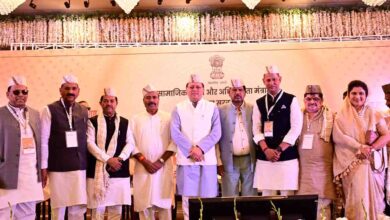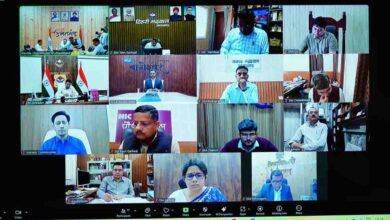Rising cancer deaths in Uttarakhand: Early self-exams can save lives

Friday, 20 September 2024 | Anupma Khanna | Dehradun
Cancer deaths are rising in Uttarakhand, making it a major concern in the mountain State. Uttarakhand ranks among the top 10 States in India for cancer cases and is third among Indian Himalayan states and UTs from 2018 to 2020. Early diagnosis through simple self-examinations and screening tests is crucial for saving lives, yet public awareness remains alarmingly low. Cancer screening rates in Uttarakhand are among the lowest in India, significantly below the national average, according to the National Family Health Survey. To address this urgent issue, The Pioneer reached out to top oncologists, who shared key insights on how early detection and timely intervention can significantly improve outcomes and save lives.
As pointed out by Dr Vimal Pandita, associate director and head of medical oncology at Kailash Omega Cancer Center, “In Uttarakhand, public awareness about self-examination and simple screening tests is very low, which leads to delay in seeking help.” Dr Pankaj Garg, head, department of surgical oncology, Shri Mahant Indiresh Hospital shares, “The biggest challenge is the sense of denial and escapism people have, thinking, ‘I can’t get cancer’. I recently performed surgery on a school principal’s husband for oral cancer. He had an ulcer that had not healed in six months. Despite being well-educated—he a chartered accountant—he ignored this common symptom of oral cancer for half a year. In a disease like cancer, six months can be the difference between life and death.”
“After a breast cancer awareness lecture at a school, a class X student brought his mother to the hospital. He encouraged her to do a self-exam and she found a lump, which turned out to be early-stage breast cancer. Thanks to early detection, she will recover. It’s deeply gratifying to know that the awareness session helped save a life. However, even well-educated women from urban, professional backgrounds often come in for diagnosis much too late,” he added.
Dr Sanjiv Kumar Verma, in-charge of medical oncology at Himalayan Institute of Medical Sciences, highlights the urban-rural divide, “Only about 50 per cent breast cancer patients in rural areas are diagnosed early, compared to 70 per cent in urban areas. We need a national policy for cancer screening for those aged above 45 or 50 years.”
Regarding the key things people need to understand about cancer, Dr Garg explains: “In cancers with unknown causes, like breast cancer, early detection is essential for better outcomes”
Breast cancer is the most common and the leading cause of cancer deaths among women in Uttarakhand. For localised or early stage breast cancer, the five-year survival rate is 99 per cent. However, if the cancer has spread to other parts of the body, this survival rate drops to only 31 per cent. Oncologists assert that every adult woman should do a breast self-exam once a month, which costs nothing and can be done in the privacy of one’s home. After the age of 40, a yearly mammogram can detect breast cancer early when it is the most treatable. For high-risk women, this screening should begin earlier. Dr Verma said, “Any discharge from the nipple is also a danger sign. Additionally, it’s important to know that cancerous lumps are not always painful.”
Cervical cancer is the second leading cause of cancer deaths among women in Uttarakhand, but it can be prevented through vaccination and screening. The five-year relative survival rate for cervical cancer is as low as 7.4 per cent for advanced stage disease, but as high as 73 per cent for localised cancer. Dr Pandita advises women to get an annual Pap smear after becoming sexually active, while Dr Garg suggests the HPV DNA test every five years as an alternative.
Currently, there are two approved cancer-preventing vaccines- the HPV vaccine and the hepatitis B vaccine.”The HPV vaccine effectively protects against high-risk strains that cause cervical cancer,” Dr Pandita said, noting it’s ideal for women before sexual activity but available up to age 45. Highlighting the importance of the HPV vaccine for males Dr Verma said, “Many believe HPV only causes cervical cancer, so only women need the vaccine. However, HPV also leads to cancers in men, such as head and neck cancers. The HPV vaccine is crucial for boys as well.” People should also not forget to get the hepatitis B vaccine that helps prevent liver cancer.
Many fatal cancers can be prevented by avoiding certain risk factors. “For instance, lung, head and neck cancers are leading causes of cancer deaths among men in Uttarakhand, largely due to smoking bidis and cigarettes, alcohol use and chewing tobacco,” Dr Verma said. Oncologists also clarified that biopsies are essential for diagnosing and assessing cancer, and do not spread the disease.






